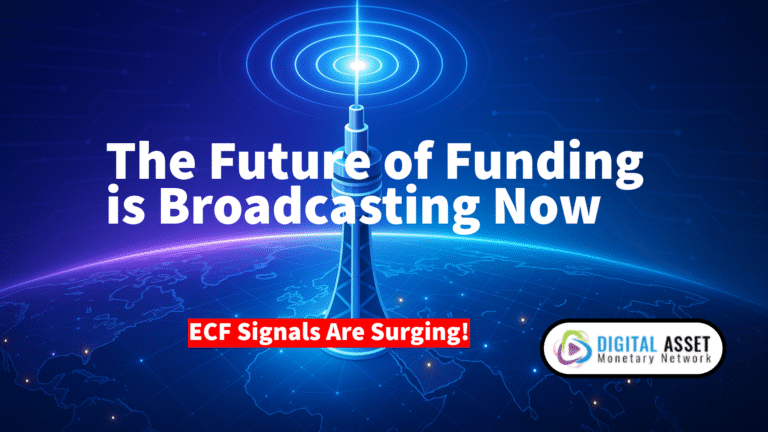From the Ground Up: Nine Signals Already Proving to Reshape Startup Funding in 2025
Over the past five months, the early-stage funding landscape has experienced a subtle but powerful transformation. From regulation-backed equity crowdfunding strategies to hybrid capital structures and new investor engagement models, 2025 is shaping up to be a pivotal year in the evolution of startup finance.
Based on a review of nine timely articles published between January and May 2025, the following report outlines key trends shaping how startups raise capital, how novice and non-accredited investors, as well as accredited investors, all participate; and how platforms are redefining the relationship between founders and funders.
1. Equity Crowdfunding Is Growing into a Core Funding Strategy
Once seen as a side door into startup finance, equity crowdfunding (ECF) is now seriously entering the mainstream. Regulatory frameworks like Reg CF, Reg A+, and Reg D have matured, giving both companies and investors more structure and confidence. Even traditionally institutional players, like Holt Xchange, are now turning to regulated crowdfunding platforms to close funding rounds.
Key takeaway: Crowdfunding isn’t an alternative. It’s now becoming a foundational building block in the capital stack for early-stage ventures.
2. A New Class of Investors Is Emerging
The line between customer, supporter, and investor is disappearing. Non-accredited investors now legally participate in equity funding rounds. Friends, family, and fans—once relegated to moral support—are now sources of startup capital. However, this shift also highlights a major gap in investor education, prompting a need for literacy programs and guided access tools.
Key takeaway: Broader participation is here, but with it comes a new responsibility to educate and support novice investors.
3. Success Depends on Founders, Not Just Platforms
Founders who succeed in crowdfunding don’t just launch campaigns; they build and mobilize communities. Whether through compelling videos, strong branding, or direct outreach, the most effective fundraisers treat crowdfunding like a launch, not just a listing.
Key takeaway: Platforms provide infrastructure, but founders must bring narrative, network, and execution.
4. The Hybrid Model Is Winning
Across the reviewed content, one strategic theme kept recurring: startups are blending equity crowdfunding with traditional capital-raising strategies. They may validate with crowdfunding first, then scale with VC; or reverse the order depending on traction and timing.
Key takeaway: Crowdfunding is no longer a detour from venture capital. It’s now becoming a reliable on-ramp.
5. Governance and Impact Now Influence Capital Flow
Investors are beginning to look beyond financials. Ventures that commit to environmental, social, and ethical governance (ESG) standards are more likely to raise successfully and perform better in the long term. One study noted that environmental orientation positively correlates with both short- and long-term fundraising outcomes—particularly when coupled with strong governance practices.
Key takeaway: ESG isn’t just about branding, it’s a material factor in startup fundraising success.
6. Regulation Is Shaping Access and Accountability
U.S. regulations like Reg CF and Reg A+ have become central to how early-stage capital is structured and accessed. Platforms and founders alike must now navigate legal disclosures, investor protections, and structured limits. At the same time, these frameworks have helped legitimize ECF and protect non-traditional investors.
Key takeaway: Regulation is not a barrier; it’s the infrastructure making crowdfunding viable at scale.
Reflections
These developments confirm what we’ve believed for years: that capital markets must be more inclusive to be more effective. But inclusion is not an endpoint, it’s a reengineering of how value is created, distributed, and sustained.
We’re no longer asking whether crowdfunding works. We’re watching how it rewires private capital access. What was once the domain of institutions is becoming a participatory economy—one investor, one story, one stake at a time.
In this environment, capital flows toward clarity. Founders must be more than builders. Founders must be communicators, architects, and educators. And those who lead with transparency, traction, and intention are proving that financial innovation can coexist with integrity.
Compliance is no longer the cost of access… it’s the confidence mechanism powering equitable capital markets. It ensures that as more people participate, the system remains just, resilient, and accountable.
This is the shape of what’s next. Not just more capital, but better capital. Not just more access, but access with purpose.
- Novice and non-accredited investors can join the Startup Investing Academy to learn about and participate in the development and growth of potentially high-value business ventures.
- Angel Investors, Everyday Entrepreneurs and Novice and Non-Accredited Investors can join the Wealth Builders Society (WBS) on LinkedIn for community insight, education, growth and support.
—————————–
This article is part of DigitalAMN’s ongoing efforts to observe and understand the shifts in capital access and early-stage funding that impact startups, investors (accredited and non-accredited), and the ecosystem at large. Stay informed at digitalamn.com.







